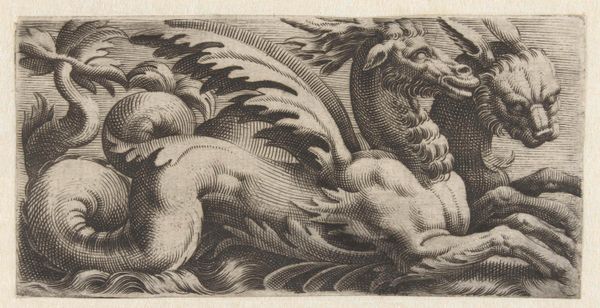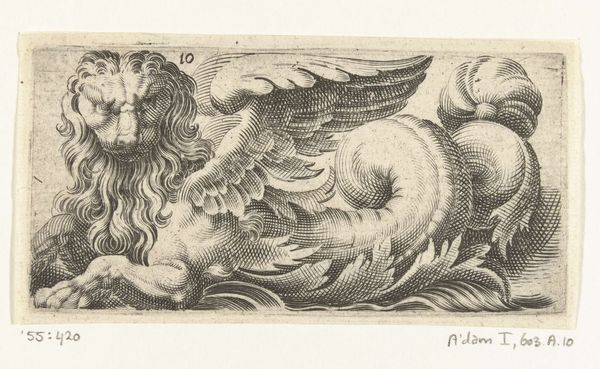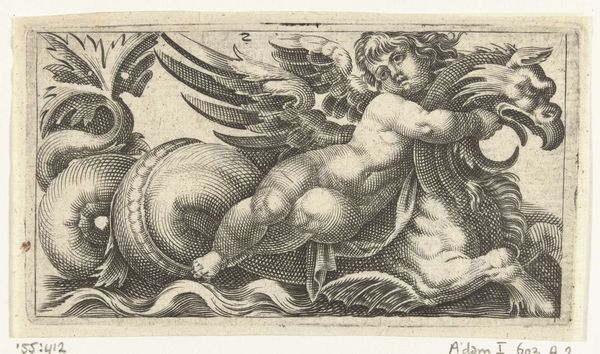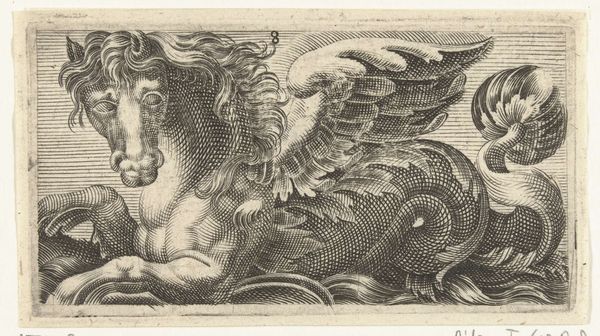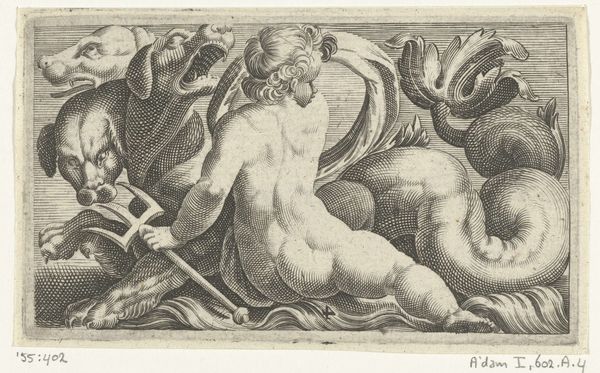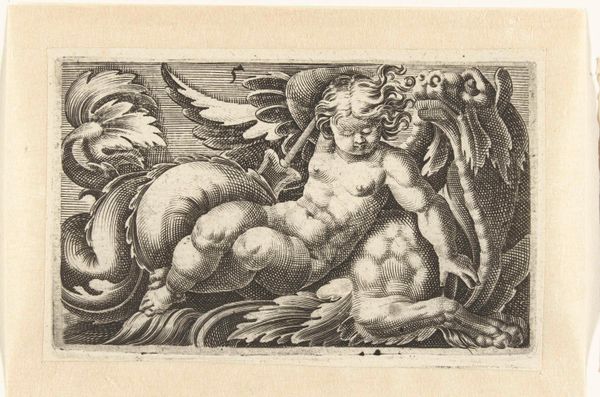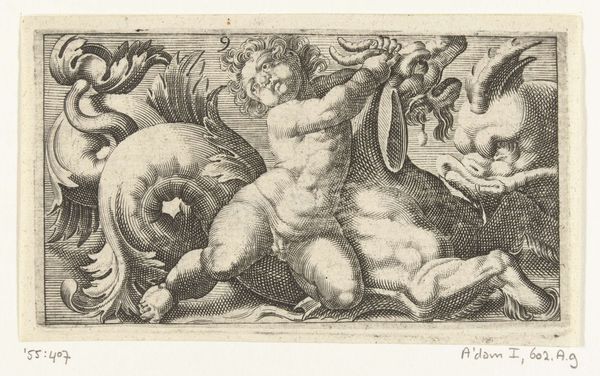
Dimensions: height 57 mm, width 105 mm
Copyright: Rijks Museum: Open Domain
Editor: Here we have "Twee zeewezens naast elkaar," or "Two Sea Creatures Side by Side," an engraving dating from between 1526 and 1606, found here in the Rijksmuseum. The artist is Adam Fuchs. What strikes me most is the intricate detail achieved through the engraving process. How do you read the composition and structure of this piece? Curator: The engraving exhibits a tightly organized structure, demonstrating masterful control over line and form. Note how Fuchs uses hatching and cross-hatching to create tonal variation and model the creatures' bodies. The composition is almost symmetrical, lending a sense of balance. Do you observe how the flowing lines create a dynamic rhythm, drawing the eye across the surface of the print? Editor: Yes, now that you point it out, I see how the lines almost ripple outwards. It’s amazing the illusion of movement he achieves! Is that contrast between the light and dark areas intentional? Curator: Indeed. The sharp contrast serves not merely a representational purpose, but also a formal one. It accentuates the textures and contours, heightening the visual impact of the monstrous forms. Consider, too, how the density of line varies across the image, creating a hierarchy of visual interest, almost forcing us to see how the light might catch on this sea creature. Editor: So it's about manipulating those elements to draw the viewer's attention in a deliberate way? Curator: Precisely. The artist seems focused on exploring the aesthetic possibilities within the limits of the engraving medium itself. Editor: Fascinating. I initially just saw strange beasts, but understanding how line and shadow play out gives me so much more to appreciate. Curator: The beauty is often in the details.
Comments
No comments
Be the first to comment and join the conversation on the ultimate creative platform.

